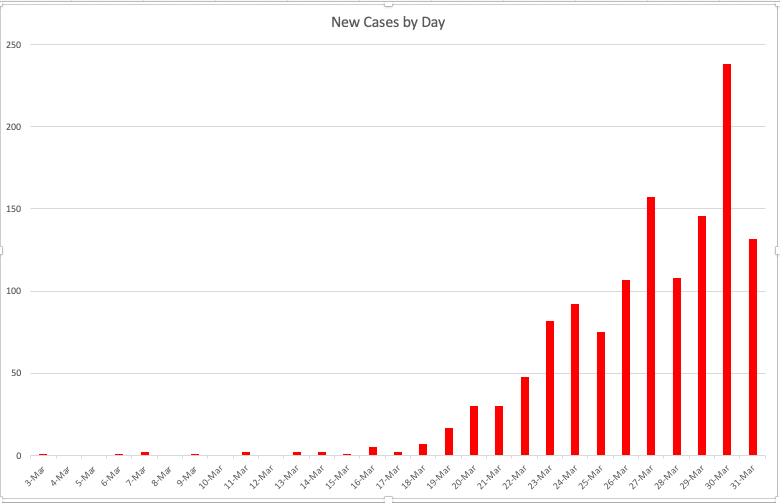
Flickr via HM Treasury

Audio By Carbonatix
Nearly 1,300 people in Arizona now reportedly have tested positive for COVID-19 as the state ramps up testing and braces for the number of positive cases to continue to climb in the coming weeks.
On Monday afternoon, Governor Doug Ducey followed the lead of 28 other states by issuing a stay-at-home order, but his extremely broad list of “essential services” means relatively few people actually will be required to stay at home.
As of Tuesday morning, 1,289 coronavirus cases and 24 deaths have been confirmed in Arizona, according to the Arizona State Department of Health Services. The actual number of people infected with COVID-19 in Arizona likely is much higher, but the state has been slow to test people for the virus and has even actively discouraged providers from testing for COVID-19.
As cases within the Navajo Nation continue to rise, with over 128 cases in the Nation and counting, Navajo Nation President Jonathan Nez issued an 8 a.m. to 5 p.m. curfew on Sunday, requiring all residents to remain in their homes during curfew hours except in the event of an emergency.
When news happens, Phoenix New Times is there —
Your support strengthens our coverage.
We’re aiming to raise $30,000 by December 31, so we can continue covering what matters most to you. If New Times matters to you, please take action and contribute today, so when news happens, our reporters can be there.
At a press conference last week, DHS Director Dr. Cara Christ said COVID-19 cases in Arizona are expected to peak in mid-April, while hospitalizations will be highest in May. Worst-case-scenario projections analyzed by Christ and DHS also show that Arizona could need an additional 16,000 hospital beds and 1,500 more ICU beds – almost double what is currently available.

New COVID-19 cases in Arizona each day, based on ADHS data
Meg OConnor
A majority of the newest cases are in Maricopa County, which has 788 cases to date. One-hundred and forty people have been hospitalized in Maricopa County. Fifty-one people are in the intensive care unit. Eight people have died – three more since yesterday.
Pima County has the second-highest concentration of cases among counties, with 202. Six of the 24 people who have died from COVID-19 so far in the state are from Pima. Twenty-four residents and three employees of the Sapphire of Tucson Nursing and Rehabilitation center tested positive for the virus, KOLD News 13 reported on Monday.
Here’s a breakdown of Arizona’s known coronavirus cases by county:
• 788 in Maricopa (+98 since Monday)
• 202 in Pima (+15 since Monday)
• 91 in Navajo (+3 since Monday)
• 81 in Coconino (+10 since Monday)
• 62 in Pinal (-2 since Monday*)
• 21 in Yavapai (+6 since Monday)
• 16 in Apache (-1 since Monday*)
• 9 in Yuma (+3 since Monday)
• 7 in Mohave
• 4 in Cochise
• 2 in Santa Cruz
• 2 in La Paz
• 2 in Graham
• 1 in Greenlee
• 1 in Gila
(*Apache and Pinal counties had fewer cases today than yesterday per the DHS data. It’s unclear what accounts for that today, but when that’s happened previously, DHS said it was due to a presumptive positive case that later tested negative by the CDC.)
As of Tuesday morning, the Arizona State Public Health Laboratory and commercial labs have tested 19,371 people in Arizona for COVID-19 (that’s an additional 2,613 tests since yesterday). Over 12,000 people in Maricopa County (which has a population of 4.3 million) have been tested. Arizona has a population of nearly 7.2 million, meaning to date, 0.27 percent of Arizona’s population has been tested for the virus.
The United States now has more coronavirus cases than any other country in the world, with nearly 174,000 positive cases nationwide. Nearly 76,000 of those cases are in New York alone.